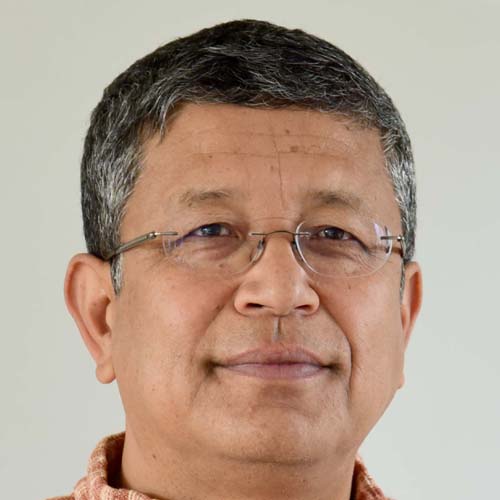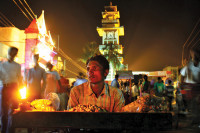Opinion
Politics in a man’s world
Given the requirement to follow the principle of inclusion in the PR part of the election, who you are becomes crucial
Deepak Thapa
Bidya Devi Bhandari was re-elected President of Nepal a few days ago, and while making the announcement of her re-election, the Election Commission also mentioned that she hails from the Khas Arya community. That was, of course, in line with the constitutional provision that the country’s President and Vice-President have to belong either to different genders or different ethnicities. Which meant that there was no way another Khas Arya woman could have served alongside Bhandari. With Vice-President Nanda Bahadur Pun fulfilling the requirement two times over by virtue of being a male as well as a Janajati, the matter rests there for now.
But, what if President Bhandari’s late husband, the Taplejung-born Madan Bhandari, had been a Madan Limbu, and Nanda Bahadur Pun had instead been Nanda Kumari Pun. How would the constitution have been interpreted? Would Bidya Devi Bhandari have been counted as Khas Arya or as Janajati? If the former, a fictional Nanda Kumari Pun could still have gone on to become Vice-President, whereas that route would have been closed if it were the latter.
This is not just a mind game, it also has implications in real-life politics, as I will lay out below.
Social change through marriage
I start with a short primer on our electoral system for the benefit of those who do not pay much heed to such matters. For the proportional representation (PR) part of the election to the parliament and provincial assemblies, each aspirant party has to submit a list to the Election Commission consisting of individuals all of whom must be slotted into any one of the categories of Adivasi Janajati, Dalit, Khas Arya, Madhesi, Muslim or Tharu. The list also has to disclose their gender as well as any other additional identities which can have a bearing on their electability, namely, belonging to a backward region, representing a government-recognised minority group or being disabled. How many of the people on the list get elected is determined by the share of the vote the party gets, with the final selection depending ultimately on the party boss(es). And, given the requirement, as laid down by law, to follow the principle of inclusion for all the groups mentioned above, who you are becomes crucial.
A layer of complexity is added when dealing with cross-ethnic or, what is commonly known as, inter-caste unions. We have a good number of politicians who are in such relationships, a fact that appears to be more true for leaders of the communist parties compared to others. The somewhat-flamboyant Federal Affairs Minister Lal Babu Pandit is among them as are Prime Minister KP Oli himself and the number two in the cabinet, Ishwor Pokhrel. In fact, of the six communist prime ministers the country has seen, all of whom were Bahun men, four had Newar wives while the son of a fifth married a Magar woman.
Years ago, writer Prakash A Raj described the phenomenon of Bahun communists marrying non-Bahun women to be indicative of the fact that perhaps Bahuns are agents of social change. That could certainly be true. But, it could also be that life as an underground activist circumscribes the choice of life partners, and fellow activists turn out to be the default selection. We saw evidence of that more recently during the Maoist movement as well when Maoist cadre were involved in such marriages in substantial numbers, and what was noteworthy was that a number of these matrimonies involved Dalit and non-Dalit couples as well.
Identity by birth or marriage
By tradition, most of our social groups are patriarchal, and a woman marrying into a different ethnicity gets subsumed into the husband’s community. But times have changed and women increasingly retain their natal surnames in marriages both inter- and intra-ethnic. Regardless of whether such a decision actually denotes an unwillingness to assume the husband’s identity or is simply a result of the desire to avoid the many hassles that come with having two surnames in different documents, it is a matter of individual choice.
Now, as we learnt from a story in the newspaper, Nagarik, when this not-very-uncommon situation is factored into our electoral politics, things begin to look somewhat murky. Consider five women recently elected to the House of Representatives under the PR system: Sujita Shakya, Tulasa Thapa, Sashi Shrestha, Yashoda Gurung Subedi and Parvati DC Chaudhary. The first four were elected as Adivasi Janajati women and the last as a Tharu woman. Shakya is married to Shankar Pokhrel, the UML Chief Minister in Province Five; Thapa to UML Vice-Chair Bamdev Gautam; and Sashi Shrestha to the ranking Maoist leader, Lila Mani Pokhrel (inexplicably called ‘Lila Mani Shrestha’ in the Election Commission’s official list).
It would be a fair enough supposition that despite being married to Bahun men, as they were all born Janajatis they continue identify with their birth heritage. Equally fair would it be to suppose that unlike them, Bahun-born Subedi, married to Maoist leader Dev Gurung and until quite recently, known only as Yashoda Sudedi, and Chhetri-born DC Chaudhary of the Nepali Congress, married to one Lalit Chand Chaudhary, identify more with their husbands’ ethnicities. Even disregarding the fact that all of them are also leaders in their own right, it should be no one’s business what they choose to call themselves.
Yet, not everyone is ready to buy that. Hence, UML MP Met Mani Chaudhary from Dang was reported as saying that the leaders simply adopted the path that would ensure the election of their wives. Referring to fellow MP Sujita Shakya, Chaudhary was of the view that she should be considered part of the Khas Arya group instead of a Janajati due to her marriage to Chief Minister Pokhrel. Parochial as it may sound, it is possibly a sentiment that finds wide favour. It does beg the question, though, about what would happen if someone like Subedi Gurung were to get a divorce. Would she be automatically disqualified from parliament or would she be allowed to continue to retain her ‘Janajati-ness’ acquired through marriage.
Personally, I believe that women should be allowed the liberty of self-identification, more so since men are exempt from making any such choice. It is likely that depending on the context most women in such relationships continuously slide between the two identities—by force of tradition or habit, and consciously or unconsciously. But, since this whole question is linked with political power, I would not be surprised if the courts are one day called upon to rule on how women in inter-ethnic marriages should identify themselves. Neither a court decree nor any kind of legislation is likely to provide a satisfactory answer to something as personal as one’s identity.
Such are the dilemmas wrought by the politics of identity. By law, anyone who would like to call themselves simply a Nepali devoid of any social identity is barred from taking part in the PR section of the elections. Equally impossible is it for anyone who professes no identity other than Nepali-ness to hold the high offices of President and Vice-President. Since such provisions are not unknown elsewhere in the world, it could be an imperative for multi-ethnic societies like ours. One cannot help feeling, though, that we have lost something in this process.




 14.12°C Kathmandu
14.12°C Kathmandu










